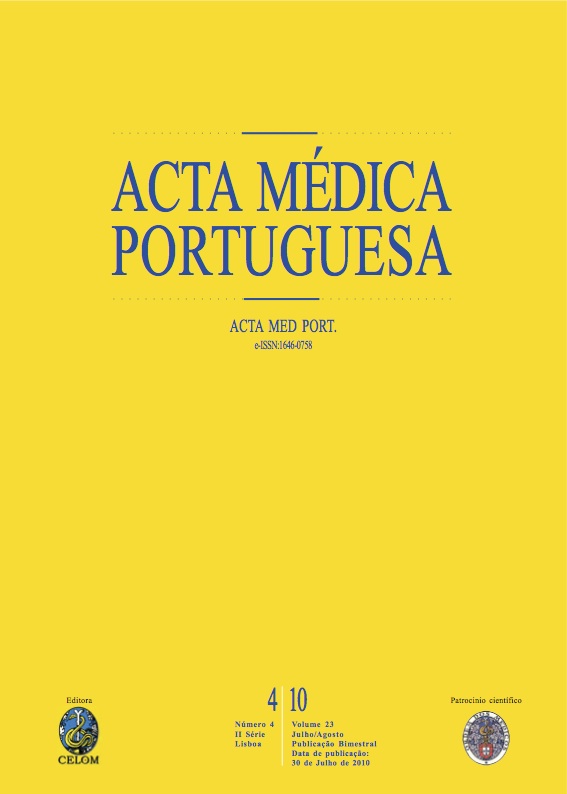Sugary drinks and glycemia.
DOI:
https://doi.org/10.20344/amp.700Abstract
Obesity prevalence is increasing all over the world. Most affected are people changing from a traditional lifestyle to an environment with both availability of high energy diet and less physical activity. Glycemic index (GI) is a measure of dietary glycemic carbohydrates, representing their ability to raise blood glucose concentrations. It refers to the postprandial blood glucose response expressed as a percentage of the response to a reference food (glucose or white bread) containing the same carbohydrate content. Given the present high consumption of sugary drinks, the putative contribution of these products to obesity deserves investigation. The aim of this study was to determine the GI of some drinks from the Portuguese market. Postprandial glycemia after ingestion of apple Frutis, peach Frutis, Green tea Frutea, green tea, black tea, lupin infusion, rooibos infusion, raftilose solution or bran solution has been determined for two hours in a caucasian population of young adults of any sex, 17 to 24 years of age. Apple Frutis GI was found to be 54.3, i.e., a low GI; Frutea Green tea had a GI of 64.7, considered as a moderate GI; peach Frutis showed a high GI, 86.6. Green and Black teas as well as rooibos and lupin infusions, all with added glucose (25 g), did not change glycemic response in comparison with the reference solution (water with 25 g glucose). No differences were seen after raftilose and bran solutions by comparison with the reference solution. GI information may help the choice of carbohydrates to include in a healthy diet. Formerly considered as a parameter of interest to diabetic patients, it may actually interest anybody concerned with a healthy diet. This study has been performed by medical and nutritional science students, who observed glycemic excursions in themselves, after drink ingestion. This experiment allowed them to see the impressive rise of glycemia after ingestion of a sugary drink, by comparison with basal levels which would not rise if plain water or other nonsugary drink had been ingested.Downloads
Downloads
How to Cite
Issue
Section
License
All the articles published in the AMP are open access and comply with the requirements of funding agencies or academic institutions. The AMP is governed by the terms of the Creative Commons ‘Attribution – Non-Commercial Use - (CC-BY-NC)’ license, regarding the use by third parties.
It is the author’s responsibility to obtain approval for the reproduction of figures, tables, etc. from other publications.
Upon acceptance of an article for publication, the authors will be asked to complete the ICMJE “Copyright Liability and Copyright Sharing Statement “(http://www.actamedicaportuguesa.com/info/AMP-NormasPublicacao.pdf) and the “Declaration of Potential Conflicts of Interest” (http:// www.icmje.org/conflicts-of-interest). An e-mail will be sent to the corresponding author to acknowledge receipt of the manuscript.
After publication, the authors are authorised to make their articles available in repositories of their institutions of origin, as long as they always mention where they were published and according to the Creative Commons license.









